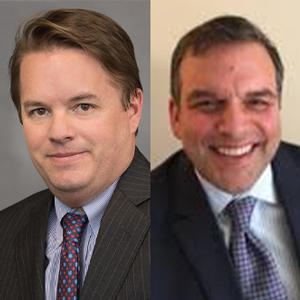Carlos Rodriguez Sr. set off from Costa Rica nearly 25 years ago for what seemed like a surefire bet: developing and operating hotels in Florida, where both tourism and business travel were in perpetual demand due to the area’s warm weather, white sand beaches and proximity to Latin America.

Carlos Rodriguez Sr., Driftwood Capital and Driftwood Hospitality Management
Rodriguez, who oversees the hotel investment and management companies Driftwood Capital and Driftwood Hospitality Management — which have a combined portfolio pegged at about $3 billion — steadily grew his businesses around the country over the years by acquiring 21 and managing 70 hotels.
We are losing money hand over fist. We lost millions of dollars.
But as the pandemic drove U.S. occupancy levels to near record lows in recent months, Rodriguez said his company has stopped paying dividends to investors and believes he will just break even by the end of 2021.
“We are losing money hand over fist. We lost millions of dollars,” he told The Real Deal. “We are in a position to withstand it, but it’s a painful hit.”
The hotel industry has since seen a gradual uptick in occupancy levels in recent weeks. And Rodriguez said his companies are still well capitalized, noting that he recently raised $250 million from investors for new hotel deals and that he’s also looking to acquire distressed assets.
But the country’s hotel industry, as a whole, continues to take a beating. For Driftwood and other operators, Covid-19 and the country’s growing economic uncertainty have weighed heavily on revenues. In addition to the high costs of running a hotel, paying staffers and making sure all property taxes are covered, keeping up with regular debt payments has become equally concerning.
In particular, hotel and retail owners are scratching their heads to figure out how to best manage debt payments on commercial mortgage-backed securities.
What was seen as a cheap and easy way to secure non-recourse financing just a few years ago now faces a reckoning as hotel borrowers are exposed to more than $85 billion in outstanding CMBS debt, the research firm Trepp reported in March.
The complicated structure of these loans, which are pooled together and sold to investors in so-called tranches, has left some borrowers struggling to make ends meet. The delinquency rate for all CMBS loans jumped to 7.2 percent last month from 2.3 percent in April, the largest spike in delinquencies since 2009, data from Trepp shows.
And unlike conventional loans from a bank that can be reworked and restructured, CMBS loans have to go through a sometimes lengthy process through a third party entity known as a special servicer in order to be modified. Already, $32 billion of loans on commercial properties were in special servicing as of May, according to Moody’s Investors Service.
Insiders say the fraught servicing process could leave some borrowers in a blackhole — with high debt installments and additional fees that could take months, and in some cases, years to pay off — before they are able to regain control of their properties.

Debra Morgan, BlackEagle Real Estate Partners
“If you are asking for a material modification to the loan, it might take six months to receive approval, or it might take much longer,” said Debra Morgan of BlackEagle Real Estate Partners, a commercial real estate firm that works with CMBS investors and servicers. “Servicers have stakeholders to answer to and extensive contracts and procedures to follow.”
Swamped servicers
Rodriguez said part of his issue with navigating the CMBS market is simply getting someone who’s working on the loan to pick up the phone.
“First issue here is getting someone to answer your request,” Rodriguez said. He added that special servicers are not adequately staffed “to handle the flood of people requesting forbearance.”
The country’s largest special servicer, Midland Loan Services, managed a portfolio of $177.7 billion in CMBS loans at the start of last year with a staff of just 26 employees, according to figures from S&P Global Ratings. Rialto Capital Advisors, the country’s second-largest CMBS servicer, meanwhile, had a staff of 56 as of mid-2018. That was roughly half the number the firm had at the end of 2014.

Ann Hambly, 1st Service Solutions
Servicers “are going to get overwhelmed very quickly,” said Ann Hambly, CEO of Texas-based 1st Service Solutions, which provides advisory services for CMBS borrowers.
Not only are many of them swamped with calls, but unlike lenders who have a fiduciary duty to work with borrowers, CMBS special servicers are only obligated to help the bondholders and mitigate losses. This structure can lead to servicers to take in more fees the longer the loan is in special servicing.
“They make money the longer you are in there,” Hambly said. “They are not incentivized to do a quick resolution.”
The inherent nature of CMBS presents risks to borrowers, according to several industry sources. In some cases, for example, special servicers will reduce commercial rents to lower costs rather than to make actual upgrades to the property or the building.
“To reduce servicing advances, servicers may exchange rent or offer lease concessions in lieu of funding significant tenant improvements for office and retail,” said Morgan of BlackEagle Real Estate Partners.
The rules for securitized commercial mortgages are also problematic for some borrowers at a time when the federal government is releasing loan programs to help businesses during the pandemic.
For one, CMBS borrowers can not take on any additional unsecured debt, which could include loans under the federal Paycheck Protection Program. This means that a special servicer could potentially take over property with CMBS debt for accepting a PPP loan if it does not first get approval from the servicer.
“It would be a further indebtedness, and it could open up to bad boy carve-outs,” said Lee Mackson, a real estate attorney with Shutts & Bowen in Miami in reference to certain loan provisions, which, if violated, allows the loan to become recourse against the borrower.
Suzanne Amaducci-Adams, a partner at the law firm Bilzin Sumberg in Miami who represents special servicers and CMBS borrowers, said “CMBS loans specifically prohibit additional secured debt.”
“So any new loan that has security is going to be problematic because you will have two creditors fighting over the same collateral if there is a loan default,” said Amaducci-Adams
High exposure
The CMBS market exploded in popularity in 2007 as U.S. property values rose to all-time highs, but the market came to a near halt during the great financial crisis.
I think the New York [hotel market] is going to take four to six years to recover.
Lenders, borrowers and investors eventually returned to the space after the recession as property values recovered and borrowers sought out the CMBS market since the loans were offered at lower rates and oftentimes easier to obtain than traditional bank financing.
CMBS deals are typically bundled together in pools of mortgages backing one or more commercial properties. The mortgages are then transferred to a trust which sells the mortgages to investors as bonds. The bonds are sliced into different asset classes based on their credit risk — the lower the class, the greater the risk for investors.
During good times, this agreement with the bondholders is generally not a concern for CMBS bondholders as long as the borrower makes regular payments. But experts now project a wave of defaults, and many properties backed by CMBS debt could be taken over by loan servicers.
For example, a growing number of retailers are in dire straits as Neiman Marcus, JCPenney, J. Crew and other major stores file for bankruptcy. At the same time, the retail industry lost 2.1 million jobs in April before seeing some much-needed gains in May, according to the U.S. Bureau of Labor Statistics.
Hotels are perhaps in even worse shape. Nationwide, hotel occupancy stood at just 36.6 percent for the week ending May 30, according to the industry data firm STR.

Andrew Broad and Rick George, Avison Young
And occupancy could be much worse since these numbers do not account for hotels that have shut down due to Covid-19, and many hotels may be underreporting, according to Andrew Broad and Rick George, hospitality brokers at Avison Young.
They estimated that there are 4,500 U.S. hotel assets backed by CMBS debt and the average annual operating loss on a 120-key limited service hotel will be $500,000. The brokers also projected that it will take the average hotel one year just to break even.
“I think the New York [hotel market] is going to take four to six years to recover,” said Broad.
No love from the Fed?
Industry groups and some private equity firms like Tom Barrack’s Colony Capital have been advocating for more relief from the government to asset backed securities as the group faces a $3.2 billion default on its hotel portfolio.
But in late March, the Federal Reserve said it would only guarantee relief for Triple A CMBS securities — the highest tier for investors — through its Term Asset-Backed Securities Loan Facility (the central bank launched the stimulus program in November 2008 to help spur lending to small business and consumers)
The Fed also excluded single-asset, single-borrower CMBS transactions from TALF, which account for nearly half of all CMBS issuance in 2019, a figure pegged at $98 billion, according to the Commercial Real Estate Finance Council.

Lisa Pendergast, CREFC
Lisa Pendergast, CREFC’s executive director, said the lack of backing from the Fed will cause mortgage rates to increase on new loans, making the availability of financing for borrowers more scarce.
“Conservative or not, you can’t underwrite assets with no current income and little insight as to what that income will look like once it does materialize,” she said.
One single-asset, single-borrower deal includes a nearly $1 billion CMBS loan backed by the hotel where James Bond first met Auric Goldfinger in the movie Goldfinger, the Fontainebleau Miami Beach. The property’s loan went into special servicing in late March and the development group led by Jeff Soffer is asking its servicer for forbearance on payments due to cash flow concerns, according to Trepp.

Brett Mufson, Fontainebleau Development
Brett Mufson, president of Fontainebleau Development in Miami, stressed that the property has not defaulted on any of its payments.
“We view all our lenders as partners and now more than ever it’s important to work hand-in-hand to ensure a smooth transition back to normalcy,” Mufson told TRD.
History repeats
Borrower and lender attitudes could dampen going forward, due to rising fees and the cumbersome process of reworking CMBS loans, sources say.
It could be especially difficult for smaller hotel owners to get financing in markets where there are fewer lending options.

Sam Chandan, NYU
“If a CMBS lender is not active in a particular market, that can have a significant impact on liquidity,” said Sam Chandan, an economist and dean of NYU’s Schack Institute of Real Estate.
During the last financial crisis, CMBS issuance fell from $229 billion in 2007 to just $3 billion in 2009, Chandan noted in a 2012 research report. Issuance later rose to more than $97 billion in 2019, according to Trepp.
Given the broader economic impacts of the pandemic, hotel and retail borrowers may feel the process is too difficult and turn to other sources of financing, said Hambly of 1st Service Solutions, though in some cases it’s cyclical.
During the last recession, many borrowers said they will never return the CMBS market, which bounced back within a few years, she noted.
“We saw it in the 2008 downturn when people said I am never doing that again,” Hambly said. “It’s almost like childbirth [where] every woman says I am never going to do that again. You kind of forget the pain.”

